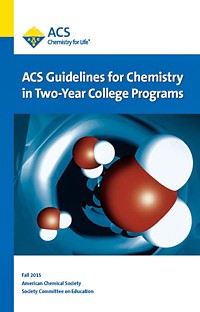Advertisement
Grab your lab coat. Let's get started
Welcome!
Welcome!
Create an account below to get 6 C&EN articles per month, receive newsletters and more - all free.
It seems this is your first time logging in online. Please enter the following information to continue.
As an ACS member you automatically get access to this site. All we need is few more details to create your reading experience.
Not you? Sign in with a different account.
Not you? Sign in with a different account.
ERROR 1
ERROR 1
ERROR 2
ERROR 2
ERROR 2
ERROR 2
ERROR 2
Password and Confirm password must match.
If you have an ACS member number, please enter it here so we can link this account to your membership. (optional)
ERROR 2
ACS values your privacy. By submitting your information, you are gaining access to C&EN and subscribing to our weekly newsletter. We use the information you provide to make your reading experience better, and we will never sell your data to third party members.
Comment
Comment: Evolution of the ACS guidelines for program approval
by Scott A. Reid, chair, ACS Committee on Professional Training
November 25, 2022
| A version of this story appeared in
Volume 100, Issue 42

One of the ways in which the American Chemical Society promotes excellence in bachelor’s-level chemistry education is through its approval program, which currently includes 700 institutions. The Committee on Professional Training (CPT) maintains and leads excellence in education via the ACS Approval Program and by developing formal guidelines for program approval, which set standards for the training of chemistry professionals. An example of such efforts is the ACS Guidelines and Evaluation Procedures for Bachelor’s Degree Programs. These guidelines and procedures were last revised in 2015, and an updated version will be released in 2023. In this commentary, I will discuss the challenges faced in updating the guidelines and how the current educational landscape ultimately resulted in the development of a more flexible set of guidelines.
An ongoing challenge to developing and revising ACS guidelines is the breadth of scope, mission, and goals of approved programs. The current cohort of approved programs consists of primarily undergraduate institutions (55%), master’s-granting departments (16%), and PhD-granting institutions (29%). The number of bachelor’s degree graduates across all programs in 2021–22 ranged from fewer than 10 to more than 450. The guidelines must therefore have enough flexibility to meet the needs of these diverse institutions while maintaining sufficient rigor to support excellence in education. In addition, as many programs use the guidelines to help secure funding, faculty lines, infrastructure improvements, and modern instrumentation (a recent survey of the programs showed that 68% used them for these purposes), the guidelines must also clearly delineate the essential requirements of an ACS-approved program.
In the 2015 version of the guidelines, essential requirements were identified by the word must in the description, while suggestions for improvement were identified by should. To address the need for more flexibility, retain emphasis on the essential requirements for approval, remove ambiguity, and increase transparency, the 2023 guidelines have been reorganized into three categories, which include
▸ critical requirements, which all programs must meet to obtain or maintain approval;
▸ normal expectations, which represent suggested practices; and
▸ markers of excellence, which are the hallmarks of outstanding programs.
Program review and assessment will rest on critical requirements, but programs will receive feedback on normal expectations that will provide guidance on how the program can continue to improve. Programs with innovative pedagogy, curricula, undergraduate research, or skill development will be highlighted in the ACS Approval Program Newsletter, which provides highlights on educational practices and newly approved programs and gives a general overview of the current education landscape through the lens of ACS-approved programs.
Increased flexibility was initially introduced in the curriculum section, informed by programs struggling with resources in the post-COVID world. The decline in graduates (bachelor’s degree graduates from approved programs declined from 2021 to 2022) reflected fewer students entering chemistry and put greater pressure on programs to recruit students into chemistry. The laboratory-hour requirement had been at 400 h for multiple iterations of the guidelines. When an analysis of the lab hours associated with required coursework was completed, this number was reduced to 350 h. Furthermore, the types of courses that can contribute to this number have been broadened, thus allowing programs more flexibility in the design of interdisciplinary majors and new degree tracks.
Two new stand-alone sections of the guidelines have been developed. To be consistent with the core values of ACS, the need was clear for a focused section on safety and a section to address diversity, equity, inclusion, and respect (DEIR). Both were developed collaboratively, either with other governance committees (such as the Committee on Chemical Safety and the Committee on Minority Affairs) or through focus groups, surveys, and discussions with the community. The DEIR section was developed with the recognition that inclusive and equitable environments are essential to the advancement of the chemical enterprise. An early version of the DEIR guidelines was published in a special issue of the Journal of Chemical Education (2022, DOI: 10.1021/acs.jchemed.1c01219). A DEIR self-assessment tool was developed for programs to gauge their compliance with the guidelines. (Contact us at cpt@acs.org if you’re interested in using this tool.)
The safety and DEIR guideline sections provide a baseline to maintain ACS approval (via critical requirements), direct programs to support and develop an appropriate culture (via normal expectations), and encourage programs to make these issues a priority (via markers of excellence).
A copy of the proposed guidelines can be found on the ACS Approval Program website at bit.ly/3UDlTou.
Views expressed are those of the author and not necessarily those of C&EN or ACS.





Join the conversation
Contact the reporter
Submit a Letter to the Editor for publication
Engage with us on Twitter